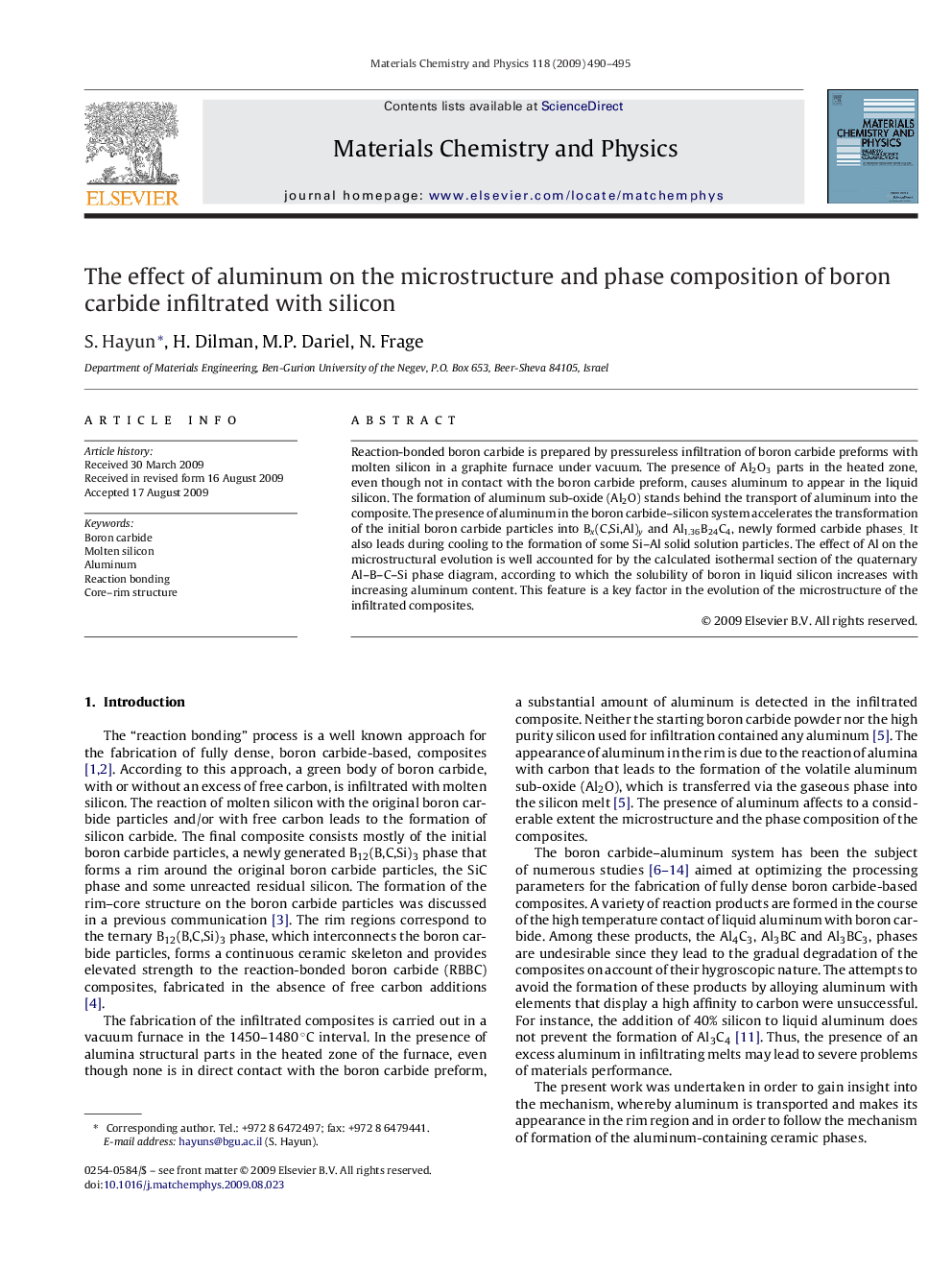| Article ID | Journal | Published Year | Pages | File Type |
|---|---|---|---|---|
| 1526106 | Materials Chemistry and Physics | 2009 | 6 Pages |
Reaction-bonded boron carbide is prepared by pressureless infiltration of boron carbide preforms with molten silicon in a graphite furnace under vacuum. The presence of Al2O3 parts in the heated zone, even though not in contact with the boron carbide preform, causes aluminum to appear in the liquid silicon. The formation of aluminum sub-oxide (Al2O) stands behind the transport of aluminum into the composite. The presence of aluminum in the boron carbide–silicon system accelerates the transformation of the initial boron carbide particles into Bx(C,Si,Al)y and Al1.36B24C4, newly formed carbide phases. It also leads during cooling to the formation of some Si–Al solid solution particles. The effect of Al on the microstructural evolution is well accounted for by the calculated isothermal section of the quaternary Al–B–C–Si phase diagram, according to which the solubility of boron in liquid silicon increases with increasing aluminum content. This feature is a key factor in the evolution of the microstructure of the infiltrated composites.
